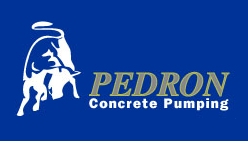- BY admin
- POSTED IN Blog
- WITH 0 COMMENTS
- PERMALINK
- STANDARD POST TYPE

When it comes to strength and sustenance, concrete is an ideal solution for construction projects. The benefits of this wonderful product are boundless!
If nothing else, this raw material is durable, accessible in large quantities, and increases the energy efficiency of the structure with its ability to absorb and retain heat. Simply put, it should be your ultimate choice for your residential, commercial or industrial construction projects.
Concrete finishing contractors in BC can take your project to the next level. Poorly applied concrete comes with a plethora of drawbacks – cracks, heat loss, and constant repairs – costing you a tidy sum in the long run. This is why it’s so important to approach trusted and certified concrete contractors who know what your project requires to a tee.
The Essentials of Concrete Finishing
Immediately following the pouring of the concrete into its designated form, finishing processes occur. This is a technique that aims at achieving an even surface to exemplify the beauty of your concrete structure.
How long after pouring concrete can you finish it? It’s advisable to give the concrete some time to sit before initiating the finishing process. This time period can range anywhere between 30 minutes to 3 hours – based on its exposure to thermal sources, how humid the surroundings are, and wind gust. After the water is bled out, you may then proceed to trowel the concrete surface.
This surface is leveled out by using a screed or trowel. What exactly are these implements? A screed is essentially a long wooden or metallic slice heaved back and forth along the concrete’s surface to extract the extra material and fill in the holes.
While strength is a major characteristic of concrete, there are various ways to modify its appearance and finish by using various added substances and techniques.
Types of Concrete Finishes
Coming to a crucial question; What are the different types of concrete finishes?
Here’s a quick outline of the different types of concrete finishes you can decide to go with based on their application and use:
Troweling
What is a smooth trowel finish? When the contractor has screeded the surface, another equally important implement known as a trowel must be applied. A trowel helps smoothen the concrete on a finer level – thus filling in the spaces and bumps that the screed missed. Troweling can be done either manually or mechanically.
Your typical trowel will comprise of a thin steel sheet connected to a handle to push and pull the concrete surface. For larger corporate and manufacturing settings, the contractor will use power trowels; tools that mimic large fans whose blade are positioned directly on the concrete.
Broomed Finish
If you want to build a driveway that is slip-proof, a broomed finish is ideal for your construction project. After the concrete has been placed, leveled and troweled, brooming will follow.
Once the contractor has achieved an uninterrupted exterior, a broom is taken over the concrete to lend it a ridged facade; these are essential to elevate the traction it provides. Concrete that is too smooth (and hasn’t been broomed) is hazardous and likely to cause slips, especially when wet.
Edging
If you need the end product to have bevels or round edges, edging will be performed by the contractor. Edging provides another important benefit in that it adds joints to the concrete’s surface to reduce the likelihood of it cracking. Edging tools require quite some practice to get right.
Types of Concrete Textures
Concrete finishing does not indicate the end of the job. If you desire a certain texture to be applied to the surface, you have the following options;
Exposed Aggregate Texture
Often seen on sidewalks, this type of texture is produced by washing away the topmost layer of the concrete. After which, other materials like sand are added to give the finished product a gravelly look.
Salt Texture
This is ideal for the deck of swimming pools. Essentially, rock salt is layered on the surface of the wet concrete, after which the contractor washes it away. The finished product? Well, you will have a very unique concrete surface with small grooves to improve its overall appeal and traction.
Stamped Texture
Concrete stamps are made from individual panels that are infused with a variety of attractive designs. These are applied to the concrete while it is setting. Apart from a range of artistic textures, designs may also be brick or stone based. When the form is taken away, the concrete’s surface could also have colours applied via the process of staining.
Looking For Attractive Concrete Finishes For Your Project?
We’d be happy to help!
Pedron Contracting offers certified and fully trained contractors to assess your site and suggest what concrete placing and finishing techniques will work best.
We provide great quotes for your Vancouver or BC project.
